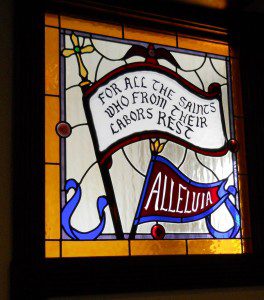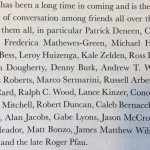A few years ago, after getting a MacBook I think, I used the iMovie feature to put some images along with a recording of the great hymn, “For All the Saints.” The recording came from a CD I own that I thought had only performances by the Choir of King’s College, Cambridge. But I later found out that this recording is by the Choir of Paisley Abbey. There may be a typo or two when I added the lyrics.The hymn was written by Anglican bishop William W. How. Beloved composer Ralph Vaughan Williams composed the tune, SINE NOMINE. Sine nomine is Latin for “without a name.”

This is a significant choice, for the tune is perhaps Vaughan Williams’ best known. The well loved tune for this holy day may be nameless, but God knows the names of all the saints who live in the fullness of his time.
As Anglican theologian N.T. Wright and many others have helpfully pointed out in recent times, this hymn more accurately reflects the Christian doctrine of the resurrection of the body than a lot of Romantic, Victorian, and modern hymns that conceive of the afterlife as sweet by-and-by (see Wright’s Surprised by Hope, esp. pp. 20-23).The hymn as written has 11 stanzas. In this country, Episcopalians usually sing 8 verses (as in President Gerald Ford’s funeral at the Washington National Cathedral), other mainline Protestant denominations usually sing 6, and Catholics sing as few as two.
“For All the Saints” is a very beautiful hymn. I say that not as an opinion, but as an objective fact! Some art embodies transcendence and expresses human longing in objectively more beautiful ways than others. I hope you enjoy this as much as I do. You should! I only hope the images I chose did it partial justice.












